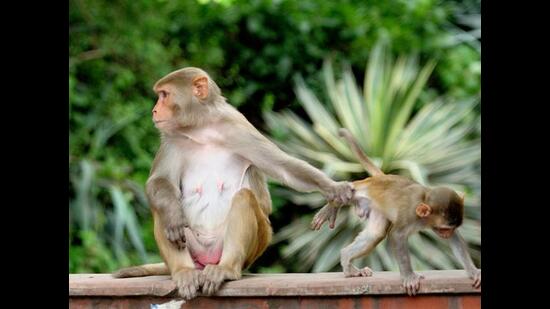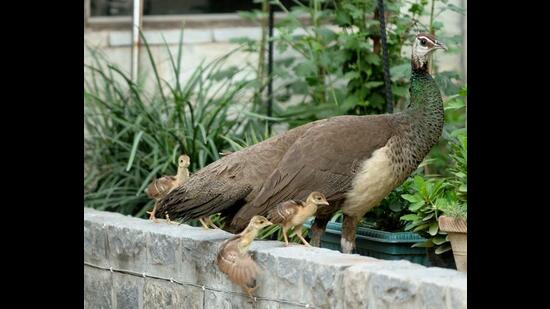Essay: On the animal instinct of mothering
While mothers of all species are protective, birds and animals are better than humans at setting their children free
It had rained at night and the beautiful weather tempted me to visit the neighbourhood park. After a few rounds on the walking track, I sat down on a stone bench, one dedicated by a son to his mother. Soon, a young woman walked up with her two children. She sat her son, who was about three years old, on the opposite side of the bench. He wriggled a little before settling down.

A plastic box emerged from the mother’s hand bag. In it was a chocolate donut. Wasting no time, the boy began licking the chocolate off the donut. Children are such angels, I thought. Suddenly, the donut slipped out of his hand. He turned to look at his mother who was busy with the little girl in her lap. Quietly, he jumped off the bench, picked the donut off the ground rubbing it on his red T-shirt to remove the dirt, and then jumped back on. Not bothering to waste time licking the chocolate, he gobbled up the donut. It all happened too quickly for me to react.

I imagined the mother’s shocked reaction if she had seen him eat the dirty donut. I was reminded that motherhood is a twenty-four-by-seven-seven-days-a-week job. A mother cannot afford to lose sight of her child even for a moment. I looked at the young woman and idly wondered how long it would be before she would be free of her responsibilities towards her children. Poor thing, right now, she didn’t even have an inkling of the rebellious teenage years to come.
Flashback to my own first pregnancy. I had asked my gynaecologist about the most comfortable stage of pregnancy. She had smiled and said, “Trust me, children are the best behaved in the womb. Wait for the time when they are out in the world.”
A mother’s job is not easy. And that statement isn’t limited to humans. Over the years, I have observed bird and animal mothers taking care of their offspring; I’ve watched them enjoying the affection of their children, worrying about their safety, and scolding them when they are naughty.

A few years ago I was clicking pictures of a happy monkey family. Mummy monkey was sitting, silently communicating with another adult member of the group with her young child next to her. I was startled by the mother’s sudden jerky action. Without even bothering to look at the baby, she had grabbed him by the leg. Seeing his mother’s attention diverted, the brat had decided to wander away. It’s true that, across species, mothers seem to have eyes at the back of their heads, I said to myself.
My grandmother often told me about a docile woman who never raised her voice but fought her extremely dominating husband with all her might, when her daughter was being married off against her wishes. “Agar bachche ki jaan ko khatra ho to hirni khoonkhar sher se bhi lad jaati hai, (When her children are threatened, a mother deer is ready to challenge the might of even the ferocious lion),” my grandmother said.
The same instinct animated a yellow-footed green pigeon who lived in a tree that I could see from my bedroom. Usually quiet and affectionate, she fought ferociously with a rufous treepie intent on making a meal of her chick. Puffed up with anger, she became nearly twice her size. Eventually the treepie had to give up.

I followed the life of the nesting mother closely, clicking hundreds of pictures of her taking care of her babies, feeding them and preparing them for the big, bad, dangerous world outside the nest. As they grew and became strong enough to sit on a branch outside the nest, she gradually withdrew. But she was still watching them. Once, when a crow looked threateningly at a chick, she instantly flew to her child’s side.
After all these years of intense bird and beast watching, the only difference I’ve observed between human mothers and others is that animal mothers set their children free once they’ve grown old enough to take care of themselves.

Not so the human parent who is often loath to let their children go. Take the case of Simran from the 1990s superhit Hindi film Dilwale Dulhania Le Jayenge, starring Kajol and Shah Rukh Khan. She has to beg, cry, and cajole her parents before her father pronounces the golden words: “Ja Simran jee le apni zindagi (Go Simran, you’re free to live your life)!
Letting go and allowing our children to become happy, healthy, independent individuals, clearly, is yet another lesson we need to learn from the birds.
Prerna Jain is an artist and photographer based in New Delhi. An extensive collection of her work can be found at her website www.prernasphotographs.com and at facebook.com/prernasphotographs. She is the author of My Feathered Friend
All Access.
One Subscription.
Get 360° coverage—from daily headlines
to 100 year archives.



HT App & Website







